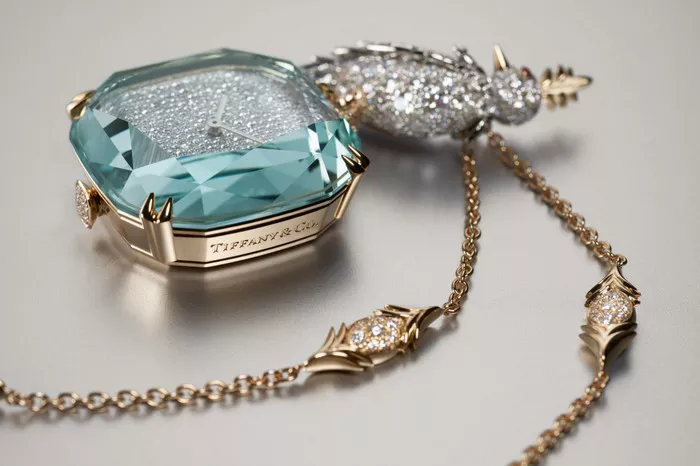Tiffany & Co., a name synonymous with luxury, elegance, and timeless beauty, has maintained its iconic status in the world of jewelry for nearly two centuries. From its exquisite craftsmanship to its signature blue boxes, Tiffany & Co. has captivated the hearts of millions around the globe. But what exactly makes this brand so popular? This article delves into the multifaceted allure of Tiffany & Co., exploring its rich history, innovative designs, cultural impact, and strategic marketing.
A Storied History
Founding and Early Success
Tiffany & Co. was founded in 1837 by Charles Lewis Tiffany and John B. Young in New York City. Originally a stationary and fancy goods store, the company quickly transitioned to focus on jewelry. Charles Tiffany’s keen eye for quality and design set the brand apart early on. By 1853, Tiffany had taken sole control of the business, which became known as “Tiffany & Co.”
Royal Endorsements and Prestigious Awards
The company’s reputation was bolstered by its association with royalty and prestigious awards. In 1867, Tiffany & Co. became the first American firm to win an award for excellence in silverware at the Paris World’s Fair. This recognition helped cement its reputation for quality and craftsmanship. The brand’s clientele grew to include European royalty, American tycoons, and Hollywood celebrities, further enhancing its prestige.
Exquisite Craftsmanship
Commitment to Quality
One of the core reasons behind Tiffany & Co.’s popularity is its unwavering commitment to quality. The company sources only the finest materials, including diamonds, gemstones, and precious metals. Each piece is meticulously crafted by skilled artisans, ensuring that every item meets the highest standards of excellence.
Innovative Designs
Tiffany & Co. has a long history of innovation in design. The introduction of the iconic Tiffany Setting in 1886 revolutionized the engagement ring industry. This six-prong setting raised the diamond above the band, allowing it to catch more light and enhance its brilliance. This design has become a benchmark for engagement rings worldwide.
Masterpieces and Collections
The brand is known for its stunning collections and one-of-a-kind masterpieces. The Blue Book Collection, introduced in 1845, showcases the most extraordinary and rare gemstones, often set in avant-garde designs. The annual release of this collection is highly anticipated by collectors and connoisseurs alike.
Cultural Impact
Hollywood and Pop Culture
Tiffany & Co.’s influence extends beyond the world of luxury jewelry into popular culture. The brand achieved iconic status with the release of the 1961 film “Breakfast at Tiffany’s,” starring Audrey Hepburn. The film’s association with the brand immortalized Tiffany & Co. as a symbol of sophistication and glamour.
Literary References and Art
Tiffany & Co. has also been referenced in literature and art, further embedding itself in the cultural zeitgeist. Truman Capote’s novella “Breakfast at Tiffany’s” and F. Scott Fitzgerald’s “The Great Gatsby” both highlight the brand, illustrating its association with wealth and opulence.
Strategic Marketing
The Iconic Blue Box
One of the most effective marketing strategies employed by Tiffany & Co. is its use of the iconic blue box. The distinctive shade of blue, known as “Tiffany Blue,” is trademarked and instantly recognizable. Receiving a piece of Tiffany jewelry in this blue box is a symbol of luxury and a momentous occasion, creating an emotional connection with the brand.
Celebrity Endorsements and Collaborations
Tiffany & Co. has a long history of celebrity endorsements and collaborations. From Elizabeth Taylor and Jacqueline Kennedy Onassis to modern icons like Beyoncé and Lady Gaga, the brand has consistently aligned itself with influential figures. These endorsements enhance its appeal and reach a broader audience.
See Also: Are Small Hoop Earrings Cultural Appropriation?
Digital Presence and Innovation
In the digital age, Tiffany & Co. has successfully adapted its marketing strategies to include a strong online presence. The brand’s website and social media platforms are curated to reflect its timeless elegance while engaging with a younger, tech-savvy audience. Virtual try-on features, digital catalogs, and interactive content have made the brand more accessible than ever.
Sustainable Practices
Ethical Sourcing
In recent years, consumers have become increasingly concerned with the ethical implications of their purchases. Tiffany & Co. has responded by implementing rigorous standards for sourcing its materials. The company is committed to responsible mining practices and ensuring that its diamonds are conflict-free.
Environmental Initiatives
Tiffany & Co. is also dedicated to environmental sustainability. The company has taken significant steps to reduce its carbon footprint and promote eco-friendly practices. This includes using recycled metals in its jewelry and implementing sustainable packaging solutions.
Timeless Appeal
Classic and Contemporary Designs
Tiffany & Co.’s ability to balance classic and contemporary designs is a key factor in its enduring popularity. While the brand honors its heritage with timeless pieces, it also embraces modern trends and innovations. This versatility appeals to a wide range of customers, from traditionalists to trendsetters.
Personalization and Customization
Another aspect of Tiffany & Co.’s appeal is its emphasis on personalization. The brand offers custom engraving services, allowing customers to create unique, one-of-a-kind pieces. This personal touch adds sentimental value and makes the jewelry even more special.
Conclusion
Tiffany & Co.’s popularity is the result of a combination of factors, including its rich history, commitment to quality, innovative designs, cultural impact, strategic marketing, and sustainable practices. The brand’s ability to adapt to changing times while maintaining its core values has ensured its place as a leader in the luxury jewelry industry. As it continues to evolve and inspire, Tiffany & Co. remains a symbol of elegance, sophistication, and timeless beauty.

